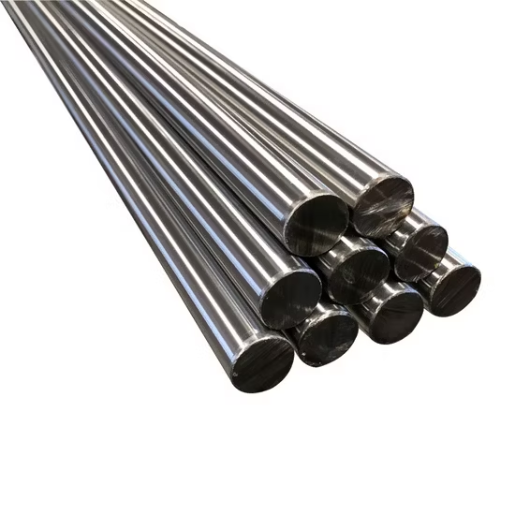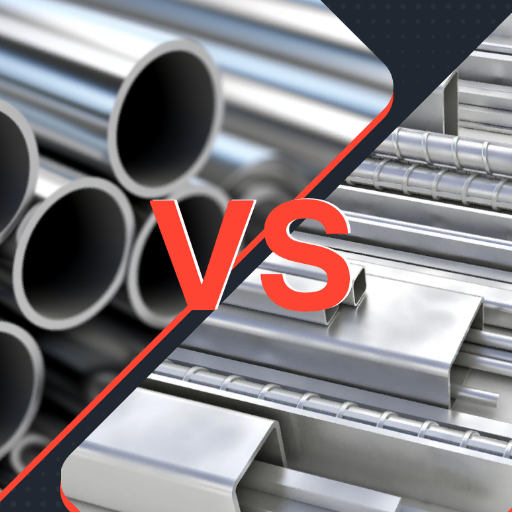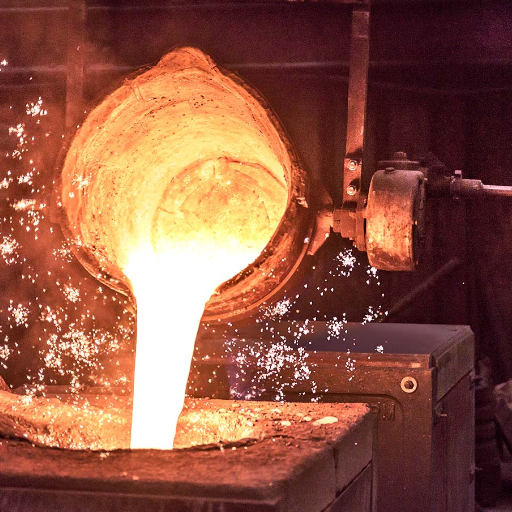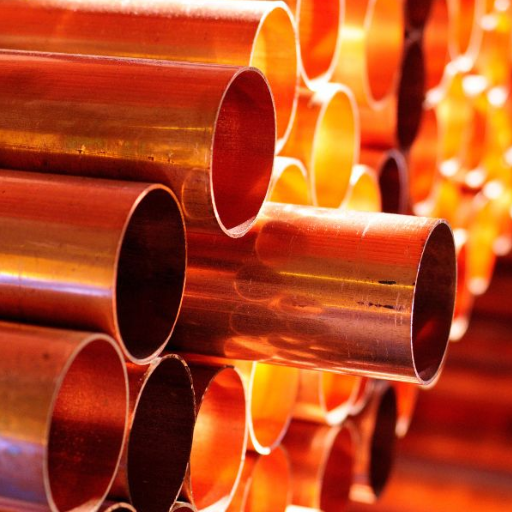Understanding the materials you can use in cooking machines like microwaves is critical for their effective use. There’s often the question of whether stainless steel that’s found not just on utensils but also cookware, can go into microwaves. Stainless steel is known, appreciated, and loved for its toughness and flexibility but if it’s wrongly used in a microwave, it can cause serious problems with either the safety or appliance functionality. This article will explain what can be safely put in a microwave, the dangers of using stainless steel within the appliance, and the standards that have to be followed for safety and cooking. By the end, you will know exactly what makes a container microwave-safe, and why some materials such as stainless steel,
Is Stainless Steel Safe for Use in the Microwave?
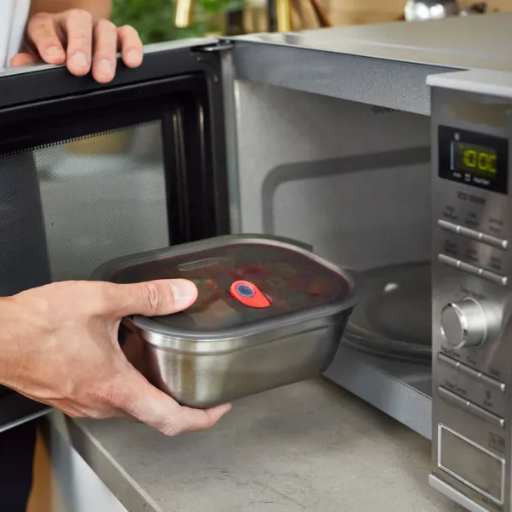
Absolutely not. Using stainless steel requirements of the microwave is a big no-no. Microwave radiation does not penetrate metal surfaces including stainless steel, which means that they reflect stainless steel. This reflection may lead to arcing which is where sparks are created as a result of electricity. These sparks may damage the microwave or worst set it on fire. The microwave reflects heat around a container and stainless steel does a poor job at heating food or liquid uniformly, in this case, rendering the microwave useless. Do not put stainless steel or any other type of metal into the microwave for safety and efficiency reasons. Use materials such as glass, ceramic, or specially designated plastic which state they are microwave safe.
What Happens When You Put Metal in the Microwave?
By emitting electromagnetic waves, microwaves work to rile up the water, fat, and sugar molecules within the food, heating it up through molecular friction, or more simply, friction. Extending the heat with metal objects inside the microwave interferes with the process because metal has a conductor. Metal with microwave electrodes will create electric currents within it that will result in two primary outcomes. Firstly, the concentration of electric charges at pointed edges can result in the production of electrical discharges (sparks). Secondly, reflective surfaces of metal results in bouncing microwaves out randomly, another cavity where the appliance’s internal workings could be damaged.
Some people don’t realize not all appliances are made out of the same material. For example, flat metals like aluminum foils does not immediately spark, unlike smooth surfaces which reflect waves. If a person was to roll up the foil, fires caused by sparks of uneven surfaces become a likely issued. In addition to this, weak metals like foils can heat up rapidly enough to ignite the areas nearby. Consider these risks when using materials in a microwave appliance if safety and efficiency are top priorities.
What Makes a Container Microwave-Safe?
Materials or Objects containing polymers such as borosilicate glass, tempered glass, and some plastics marked with “PP” or recycling code #5 are suitable for these types of purposes as they do not melt, warp, or release any chemicals during the cooking process. These materials also have to be designed specifically for withstanding heat, while cooling under safe/ideal conditions. Keeping the space’s surrounding temperature in mind when empowering the unit with them remains crucial.
Microwave Oven: Understanding Its Interaction with Stainless Steel
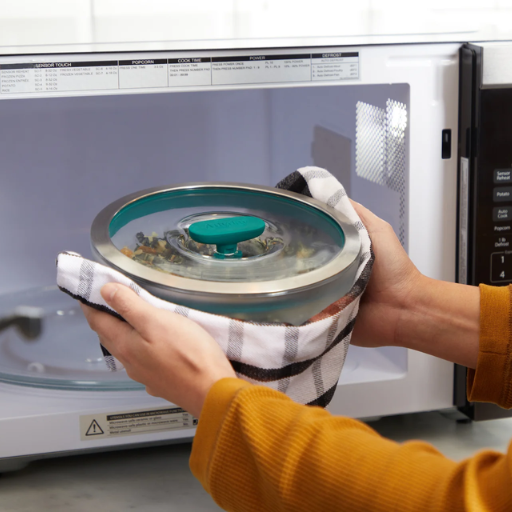
The microwave safe stainless steel should be avoided as container for the microwave oven. The reason for this rests on the item’s highly reflective nature. The interaction of microwaves and stainless steel will result in bounce instead of absorption. Because of this, the microwaves will cause a disruption on the electromagnetic waves resulting in a possibility of sparking. This might end up damaging a microwave’s interior and even pose a risk for fire. Besides, the stainless surface of the food container might block the penetration of microwaves hence preventing uniform heating of the food. For safe use of the microwave, glass, ceramic, or approved plastics should be used instead as they are safe to use in a microwave.
How Do Microwave Ovens Work with Metal?
The behavior of microwave ovens and metal objects is directly influenced by the core behavior of electromagnetic radiation. As with other parts of the electromagnetic spectrum, microwaves, which have a wavelength of approximately 12.24 cm, are dealt with differently based on the dielectric and conductive properties of the material in question.
Metals are also good conductors, therefore free electrons on the surface can move with ease. As a result, there is disruption to the electromagnetic field created within the microwave, and electrical arcs or sparking can potentially occur at joints or sharp edges. These visible sparks are due to the fact that energy that has been literally concentrated builds up to a point where the surrounding air will ionize producing a visible arc.
Another key aspect is reflection. Metals do not absorb microwaves; instead they reflect them, which can create hotspots, or damage to the microwave’s internal magnetron if energy is not dissipated properly. Such reflection prevents microwaves from penetrating food, so metal greatly lessens, reduces, or entirely inhibits heating efficiency. Much of the metal present in modern microwave ovens, including the protective mesh screen door which contains the microwave-visible-light ratio of “fire” safety glass, serve purposeful function being properly sized to reflect microwaves while allowing safe monitoring of the food through the visible light. Those design choices maintain controlled and safe operations despite the presence of metal structures within the device.
Are There Any Risks of Using Stainless Steel in a Microwave Oven?
Improper handling of stainless steel in microwave ovens can come with grave consequences. Sparks, uneven heating, and even damages to the internal workings of the microwave can be inflicted by the materials lack of control usage since they reflect microwaves. Stainless steel reflects the microwaves preventing them from penetrating and heating food effectively which yields cold spots or partially cooked food. In addition, the confinement ensures the reflection of microwave energy would result in electrical arcing which is the creation of sparks.
Alternatives to Stainless Steel Containers

Glass, ceramic, and certain types of plastic are safer alternatives than steel containers when microwaving something. The recommended materials are glass and ceramic because both are unreactive, capable of withstanding high temperatures , and won’t break or leach any chemicals into the food. Make sure that the ceramic is not decorated or trimmed with any metals. Plastic labeled as microwave safe is another option, however it must be checked for safety due to some plastics being able to emit dangerous substances when heated. Flexible and durable silicone labeled as microwave safe can also be used to reheat food. These options are better than other metals because there is no danger of overheating stainless steel, or any other metal.
What Are Microwave-Safe Food Storage Options?
Glass containers are still some of the best options when it comes to temperature control food storage since they don’t emit toxic chemicals even under high heat. It is easy to reheat food in borosilicate glass, which is used to make cookware and storage containers as ceramic dishes because they can safely withstand thermal shock If a label declares them microwave-safe, it is safe to use them in the microwave.
Materials can undergo a revolution, for example, specialized BPA-free microwave plastics that can endure moderate heat without deteriorating. These materials are classified by dos and don’ts of usage related to chemical leakage. There are also two subcategories of silicone, such as pliable and heat resistant, estimating the amount of space that should be reserved for an object when storing or reheating food. On the other hand, accurate labeling is crucial, as are proper certifications and passes in regard to microwave safety standards.
How to Identify Microwave-Safe Stainless Steel Food Containers?
In a microwave, the food containers have to be specified. This means there must be clear indications by the Manufacturer’s Mark or label that says “microwave-safe.” Food containers that go through many tests are likely to show such certifications either on their package or directly on the product. Also, the composition of the stainless steel container is important. Some alloys could be intended for reducing electromagnetic interference therefore minimizing risk of sparking or damage in the microwave. It is wise to refer to the user guide that comes with the container for proper instructions. In cases with no such information, customers are encouraged not to microwave such stainless steel containers as lack of information and misuse may result the microwave or the unit itself being damaged.
How to Reheat Food Safely in the Microwave
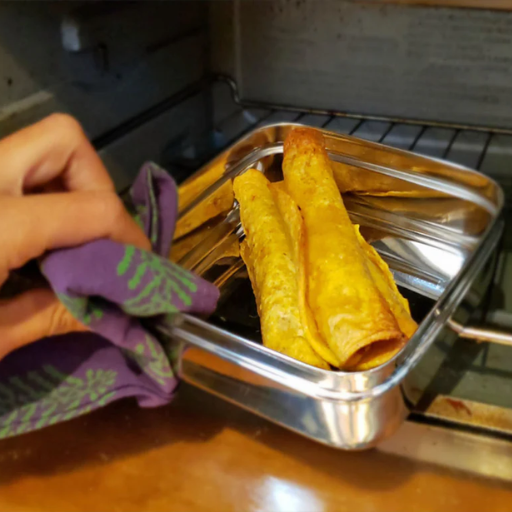
- Use Microwave-Safe Containers
Opt for containers marked “microwave-safe” as they will not release any additional stress-inducing chemicals nor will they get damaged by the heat.
- Cover Food Properly
A microwave-safe lid or wrap should be used to cover the food while allowing some steam to escape. This retains moisture while also permits proper heating.
- Avoid Overheating
Use short intervals to heat food. Stir or rotate it at intervals in order to promote uniform heating and decrease the chances of hot spots.
- Check Internal Temperature
Food that has been reheated must be 165°F (74°C) for the number one rule of bacteria safety to be claimed.
- Be Cautious with Certain Foods
Precise reheating is a requirement for all safety-issue food. Confirm safety guidelines to eliminate safety issues.
What Containers Should You Use for Reheating?
Choosing the right container for reheating is crucial for safety and achievement at the same time. Recommended options include glass, ceramic, or approved plastic containers because they won’t leach toxic chemicals into food. The latter will smell and stain much less because glass and ceramic containers retain heat evenly and are devoid of porous structures. As for the plastics, they must be marked as microwave-safe to ensure they will not warp plastic when microwaved. Do not use aluminum foil because it will spark in the microwave and be careful with products containing metals. Also, some types of disposable food packaging, like takeout boxes, might not be designed to be heated and can soften or melt and release poisonous gases. Observing these recommendations allows you to minimize safety challenges while keeping the product’s integrity during heating.
Are There Any Guidelines for Microwaving Metal?
Adhering to safety principles such as sparking or damaging the appliance is important when metal is microwaved, while microwaves do have the ability to heat metal under certain circumstances. While many microwaves should not have metal objects placed inside them, some microwaves can safely contain small pieces of metal, such as separators printed on the packaging of microwave-safe takeout boxes. In other instances where microwaves contain wires and the like, crumpled foil and sharp edges such as those on cans should be avoided since these may result in intense electric discharges which could result in arcing. Provided the manufacturer’s label on metal containers calls them compatible for use in microwaves, rounded smooth metal items may be safer. Because designs and tolerances vary, always check the user manual for the specific microwave. Following the principles consistent with these means consumers can ensure risk is minimized and efficiency is retained when operating a microwave.
Common Misconceptions About Microwaving Metal
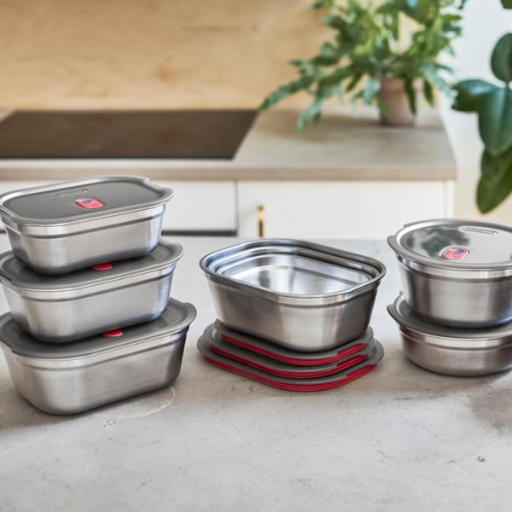
One common myth is that every type of metal can make a fire or blow up a microwave in an instant. Not all metal is a danger zone. In fact, smooth and flat metals found in some microwave-safe containers are completely safe to use, as long as the manufacturer allows it, so those do not pose any risk.
Another false notion is that any amount of metal such as foil on food containers is hazardous. Thin strips of metal microwave-safe foil can be used to cover certain portions of food to prevent them from cooking too much. This, however, should only be performed under stringent manufacturer instructions.
Finally, some say that every microwave model reacts the same way to metal objects. The make, power level, and technology all differ from microwave to microwave which means safety can vary wildly with different appliances. Always read the user manual for guidance on the manufacturer’s rules for your microwave.
Is It Ever Okay to Put Metal in the Microwave?
The issues surrounding metal use in microwaves involves balancing safety considerations with fundamental principles regarding microwave design and technology. It is best not to place metal objects in a microwave since this can cause arcing and damage the microwave appliance. However, there are controlled contexts in which metal usage can be permissible. For instance, some dishes are meant to be microwave safe and contain small portions of metal as rims or handles which are put there purposely so that microwaves can be used without causing sparks.
Sometimes metal can be used to protect specific areas of food, like the surface, from overcooking. Thus, small foil coverings can serve this purpose. This approach is often used to heat or cook certain items like meat, especially chicken, to eliminate hotspot heating, but the application must be precise. At all costs, ensure that the metal do not touch the cavity walls, as this can lead to electrical arcing.
Modern microwaves have features that may permit the careful use of specific metals. Such advice is often a part of the user guide for the appliance and must be strictly followed if safety is to be ensured. Every microwave is designed differently and has a different wattage. Therefore, safety recommendations from the manufacturer must be followed word by word. Active supervision and information will always aid personal safety which trumps any convenience.
Why Do Some People Use Stainless Steel in Microwaves?
Safety isn’t the only reason some people consider using stainless steel in microwaves, if it is steel cups or utensils. Some people microwave in stainless steel because of the material’s convenience for heat resistant cooking and strenuous task. Stainless steel containers are famous for their corrosion resisting properties. This makes them ideal candidates for heating or cooking food which would ruin other items. Also, some microwaves are made these days with some sort of wave distribution technology. Such microwaves reduce the chances of sparking when properly made stainless steel pots or pans are utilized. Also, if the relevant steel is marked microwave safe and complies to the instruction provided, the reflective nature of stainless steel can under certain circumstances assist heating more efficiently. Nonetheless, steel products marked microwave-proof with restrictions are also waiting for the user to misuse it and risk damaging the microwave as well as the appliance so the user has to be cautious when using them.
Conclusion: Safe Practices for Using Stainless Steel in Microwaves
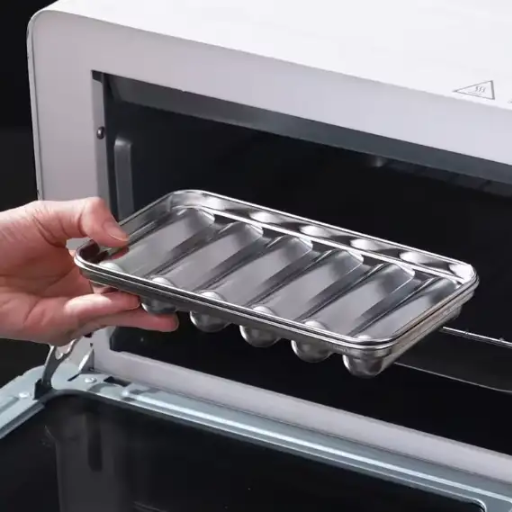
Utilizing stainless steel within microwaves must be done with extreme care of the safety practices to avoid any risks. Only stainless steel items labeled as microwave safe should be used. Check the user guide of the unit for compatibility and ensure that the stainless steel does not touch the walls of the microwave or cause arcing. Do not use any item that is damaged or has embellishments with metals because those items can be a serious threat. Following the manufacturer’s guidelines and the most important practices ensures safe and efficient use of the microwave.
What Should You Remember When Using Metal in the Microwave?
Understanding how to use metal with microwaves requires a level of caution as well as knowledge about the unit’s features. With older microwaves, the use of metal was prohibited in all scenarios, but with newer models, some advance designs allow limited use of metal such as foil shields or specially designed containers. Even in such cases, it remains critical that the metal object does not have form any sharp edges and points as the object can cause a great deal of arcing and destruction to the microwave.
Electromagnetic radiation behaves differently to metals, reflecting energy instead of absorbing it, as is the case with most food. Improper handling of the microwave, or its food contents, could lead to energy reflection which can create hotspots and electrical discharges. For example, aluminum foil should only be used sparingly and pressed smooth against the food’s surface. Additionally, any microwave-safe metal accessories need manufacturer approval, must be used strictly as intended, and must be shown not to be dangerous.
Recent scholarly work alongside other authoritative sources suggest checking the appliance, as well as its contents, for correct and safe use. It is also recommended that metal parts maintain clearance from interior walls of the microwave, avoiding the latter scraping against the former as this could invite complications. Metal manipulation, along with the suggested practices, enable ease of use and safe operation of microwave appliances.
Reference Sources
-
Stainless Steel Microwave-Safe Food Containers1: Traditionally, metal containers were avoided in microwaves due to electrical arcing. However, specially designed stainless steel containers (typically made of 304-grade stainless steel) are now available and safe for microwave use. These containers have modified corners to prevent arcing and ensure safety.
-
British Stainless Steel Association (BSSA) Report on Microwave-Safe Containers2: Reinforces the safety of specially designed stainless steel containers for microwave use. These containers are available in various sizes and are guaranteed safe by research organizations. Users are advised to check for “microwave-safe” labels before purchase.
Frequently Asked Questions (FAQs)
Q: Can stainless steel products be used in a microwave oven?
A: No, stainless steel products should not be used in a microwave oven due to the risk of causing problems such as arcing.
Q: What happens if you put stainless steel containers in the microwave?
A: Putting stainless steel containers in the microwave can cause arcing, which may damage the microwave oven and create a fire hazard.
Q: Are there any microwave-safe stainless steel food containers available?
A: Yes, there are easy to find microwave-safe stainless steel food containers in a variety of styles, but they are specially designed to be safe for microwave use.
Q: What type of stainless steel is considered safe for microwave use?
A: Containers made of 304 grade stainless steel are generally not safe for microwave use unless specified as microwave-safe, as they can still reflect microwaves.
Q: Why is it important to choose the right containers for reheating in the microwave?
A: Choosing the right containers for reheating in the microwave is important to prevent damage to the microwave oven and to ensure even heating of food.
Q: Can using a fork made of stainless steel in a microwave cause issues?
A: Yes, using a fork made of stainless steel in a microwave can cause arcing and potentially damage the wall of the microwave oven.
Q: What should I do if I’ve been hesitant about using stainless steel containers in a microwave?
A: If you’ve been hesitant about using stainless steel containers in a microwave, it’s best to avoid them unless they are specifically labeled microwave-safe by the manufacturer.
Q: What are some alternatives to stainless steel containers for microwave use?
A: Alternatives to stainless steel containers for microwave use include glass or ceramic containers that are labeled as microwave-safe, which are safer options for heating food.

